Introduction
“From ancient times, men and women have gathered under the night’s sky and taken substances that have helped them commune with their inner being and the life that runs through all things. They have sat in prayer and silence seeking healing and guidance so that they could return to their lives better people and more aligned with the deeper currents of life” – Christopher M. Bache, Ph.D., LSD and the Mind of the Universe
Throughout human history, a desire for connection with something greater than ourselves has been a defining characteristic of our species. Our built-in curiosity to understand our place in the cosmos has led us to explore pathways to expanded consciousness, including the ceremonial use of plant medicines – what modern science now classifies broadly as psychedelics.
Ayahuasca, a sacred brew, represents one pathway that has traditionally been used by groups in the Amazon Jungle. Its use varies by region, but it has served the purposes of healing, connection, and spiritual insight for millennia.
Today, ayahuasca has captured the attention of spiritual seekers, scientists, and healers worldwide as its benefits are becoming more widely recognized. As somebody walking this path myself, I wanted to share my understanding, experiences, and insights with this plant medicine.
Note: This post is part of a series and offers a general overview of ayahuasca, covering its history, traditional and modern uses, and its potential for healing. I’ve also included additional resources for those who wish to dive deeper, as the subject is vast and complex. The information here draws from my knowledge, research, and personal experiences, primarily within the Shipibo lineage of Peru. I am no expert—simply an earnest seeker sharing what I’ve learned. Further posts cover my first and second experiences with this powerful plant.
Aya…what?
Ayahuasca is a psychedelic brew made from plants native to the Amazon region of South America. It is primarily used in ceremonial contexts under the guidance of a shaman (curandero). Users experience altered states of perception and often report profound insights and healing.
Despite its beneficial potential, ayahuasca remains largely unknown and misunderstood. The “War on Drugs“ of the 20th century cast a shadow over all psychedelics, labeling them as dangerous and creating a culture of fear and mistrust. While some caution is warranted, this blanket stigma has obscured the potential benefits of many helpful substances.
My goal in writing this is not to convince anyone to try ayahuasca, but to offer an informed, balanced perspective for those curious about its history, uses, and effects.
It’s important to note that ayahuasca is not a recreational substance. Its purpose is healing, learning, and spiritual growth—not escapism or entertainment.
Healing Potential
In recent years, ayahuasca has gained attention not only for its ability to expand consciousness but also for its potential to heal. The reported benefits are wide-ranging, addressing physical, emotional, and spiritual ailments. Stories of trauma recovery, PTSD relief, addiction treatment, and even remarkable physical healings have emerged from this space.
Beyond physical and emotional healing, many who work with ayahuasca report profound spiritual transformations. These experiences are harder to quantify but are no less real. For me, ayahuasca has been a gateway to understanding my place in the cosmos and fostering a deeper connection to nature and the universe.
While ayahuasca is not a panacea, its healing potential is undeniable. However, the outcomes depend heavily on the sincerity and intention of the participant, the skill of the facilitators, the ceremonial setting, and the integration process afterward.
My Path to Ayahuasca
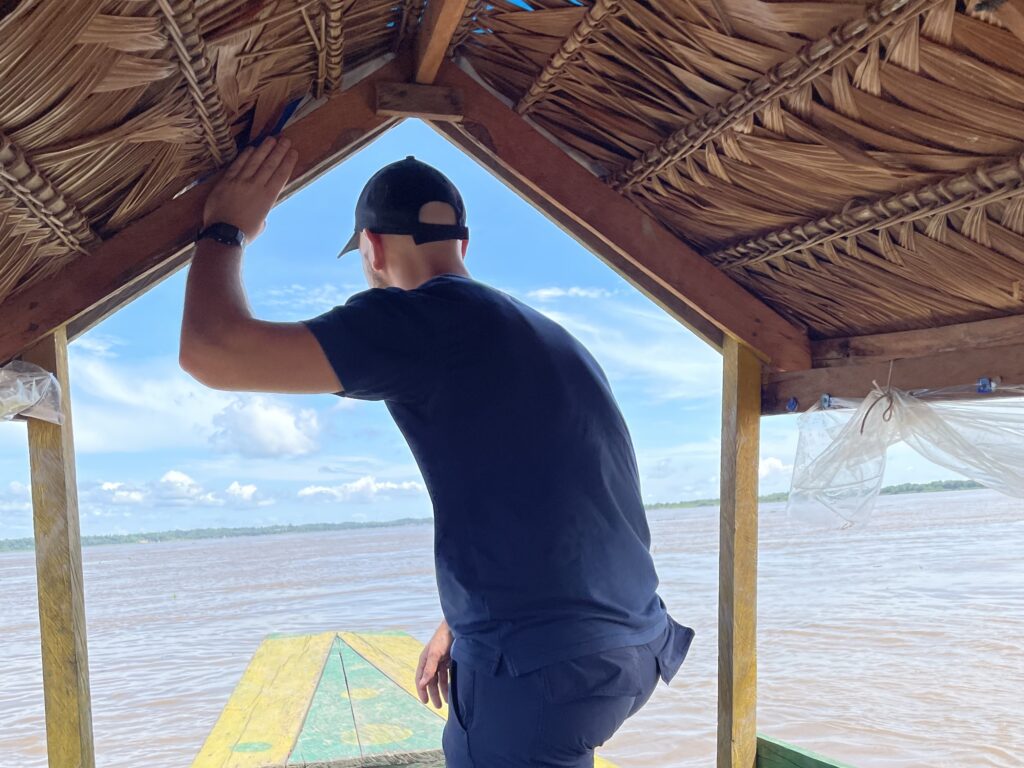
I’ve always been a curious person, drawn to exploring the depths of my own mind and the mysteries of the world. Experiences with meditation and psilocybin have showed me that the depth of our minds is as vast as the universe outside of us. The more I’ve looked inward, the more I’ve found. Later experiences with breathwork and days in silent meditation showed me much the same.
A few years ago, I was listening to a Tim Ferriss podcast that discussed ayahuasca. It was described as a powerful psychedelic used in the amazon jungle for profound visions and healing. This piqued my interest–the idea of a plant medicine that could offer profound insights and healing felt like a bridge between the rational, scientific worldview I grew up with and the spiritual, interconnected reality I was beginning to sense.
For me, ayahuasca has been a catalyst for personal growth and a broader perspective on life. It has challenged my assumptions, reframed my ego, and connected me to something greater than myself. In many ways, working with ayahuasca has felt like touching magic—a glimpse into a reality that is both ancient and timeless.
Understanding Ayahuasca: The Sacred Brew
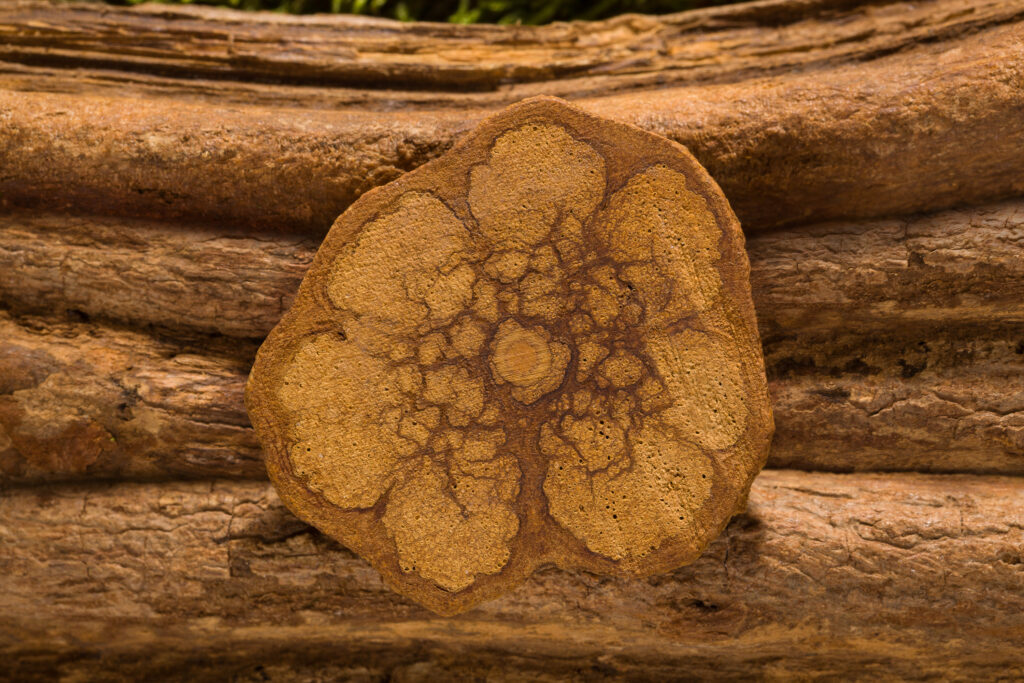
Origins and Etymology
Ayahuasca originates in the Amazon Jungle with evidence of indigenous use for at least 2000 years in Ecuador, Peru, Columbiam Brazil, and Bolivia. Many groups have incorporated it into their spiritual and cultural practices, with differing methodologies between groups. Historically, ayahuasca has been primarily used in ceremonies led by shamans who serve as a bridge between the physical and spiritual worlds.
The name “ayahuasca” comes from the Quechua words aya (soul or death) and huasca (vine), translating to “Vine of the Soul” or “Vine of Death.” While physically safe, this name reflects the brew’s ability to facilitate deep spiritual journeys and transformative experiences.
Science Behind the Magic
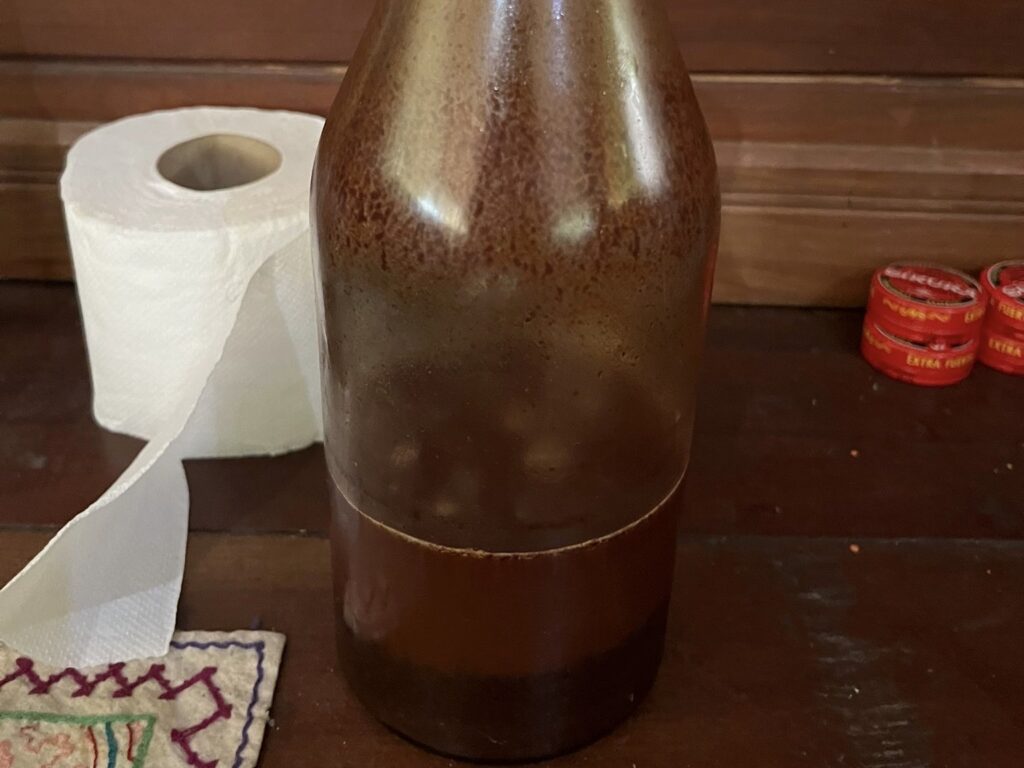
Ayahuasca is usually made by boiling two plants: the ayahuasca vine (Banisteriopsis caapi) and the leaves of the chacruna plant (Psychotria viridis). The vine contains harmala alkaloids, which act as a monoamine oxidase inhibitor (MAOI), allowing the DMT in the chacruna leaves to become active in the body. The harmala alkaloids also induce nausea, which gives ayahuasca its purgative effect. The result is a potent psychedelic brew that induces altered states of consciousness.
While these two plants typically form the base of ayahuasca, other plants may be added to affect the experience. Though wide ranging, they include other DMT containing plants, tobacco, and coca.
The origins of ayahuasca are shrouded in mystery. How this combination of two plants–out of tens of thousands in the Amazon–remains a topic of fascination. Many believe the knowledge was revealed through spiritual guidance or visions from the plants themselves.
The Purge: Cleansing Body and Soul
Purging through vomiting, diarrhea, or emotional release is an integral aspect of the ayahuasca experience. Though we often associate these experiences with illness in our culture, purging in this context is seen as a process of getting well. It’s a form of physical and spiritual cleansing. The purge is often linked to confronting fears, releasing past traumas, and letting go of what no longer serves us. It can be intense, and many view it as an essential part of the healing process.
Historical Uses
Ayahuasca has been used in diverse ways across the Amazon, with practices varying by region and tradition. Often, it is taken in a ceremonial setting under the guidance of a skilled facilitator or shaman. Throughout its long history, ayahuasca has served many purposes including healing, divination, rites of passage, and deep spiritual connection.
Different cultures have developed their own ways of working with this plant medicine. Among the Shipibo in Peru, ayahuasca is primarily used by the shaman, with occasional participation from other community members. In contrast, Brazilian traditions like Santo Daime and União do Vegetal involve entire communities. Ceremonies are typically held at lower doses and often take the form of ecstatic gatherings, with collective movement, music, and prayer woven into the experience
The Role of the Shaman
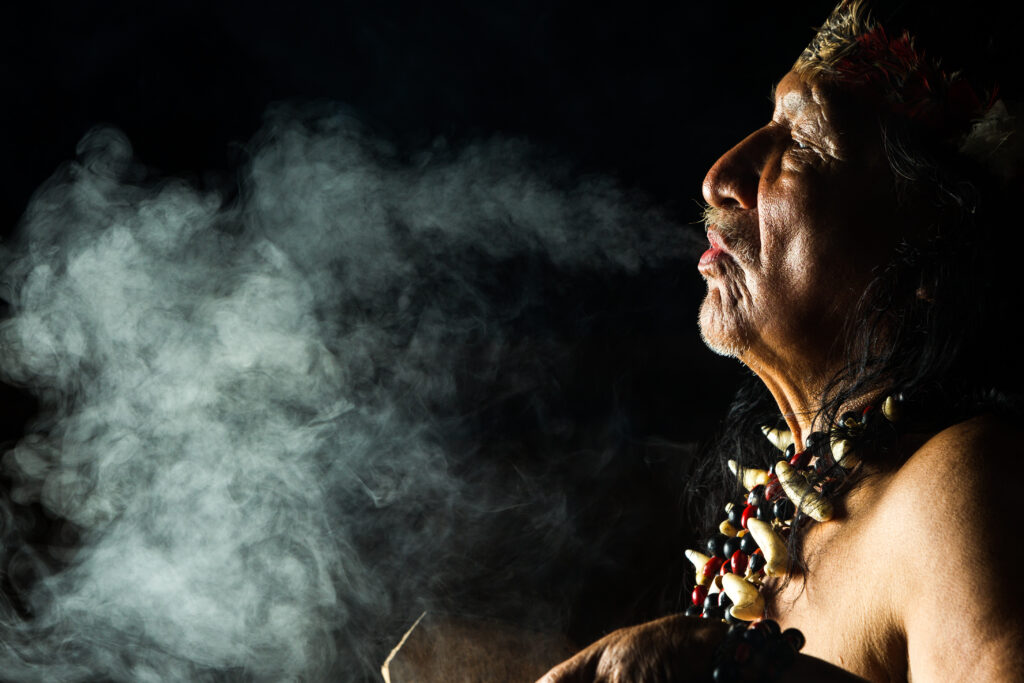
Shamans, or curanderos, serve as skilled guides in ceremonies, using healing songs called icaros to direct healing energy and support participants through their journeys. The role these shamans play in their communities is wide-ranging—from healers and seers to spirit guides and mediators. Shamans are seen as existing in two worlds: the physical and the spiritual, with ayahuasca acting as the portal to move between them.
It is common for shamanic abilities to be passed down through family lineages, though they could also be selected at a young age through dreams and visions, or after surviving a serious illness. Apprentice shamans undergo extended periods of isolation and follow strict dietary restrictions while mastering healing techniques, spiritual practices, and the art of interpreting visions.
The Effects of Ayahuasca
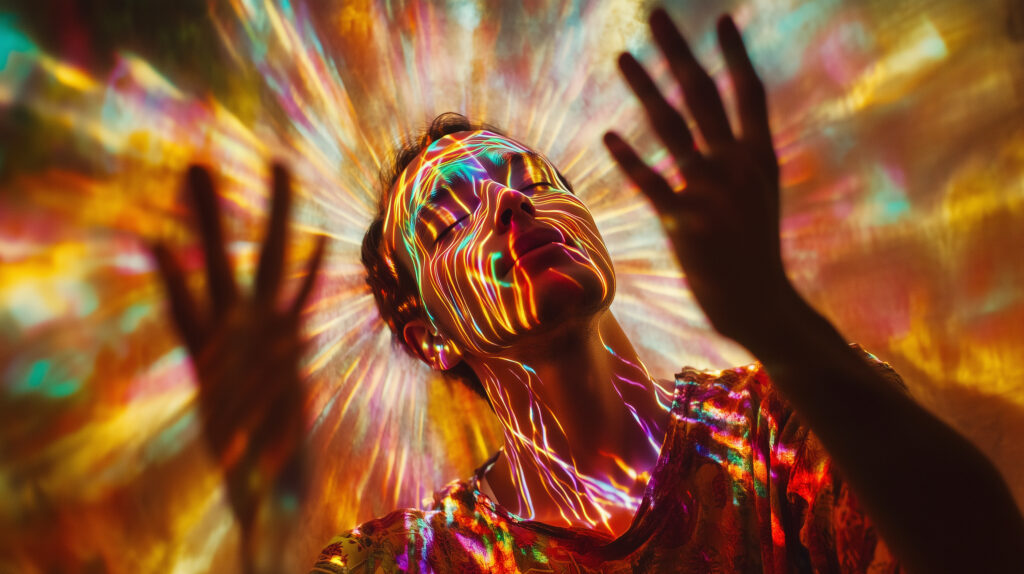
The effects of ayahuasca can vary drastically between individuals and between ceremonies for the same person. There is no ‘typical’ experience, but a range of effects that can occur. It’s also possible to have no effects, this is most common among people in their first ceremonies. The effects of ayahuasca typically last 4-8 hours, but this depends on the dosage and individual.
It’s hard to put the ayahuasca experience into words. A lot of it just doesn’t fit inside ordinary language or ways of seeing. People often describe it as “ineffable,” and I get why. For me, it’s like trying to explain sight to someone who’s never seen. Words can hint at it, but they’ll never be the same as living it.
That being said, the common experiences people describe include:
- Visual effects: geometric patterns, vivid colors, enhanced memories and imagination. These can occur both with eyes closed and open and can seem to exist outside of a normal frame of reference—like another sense has been added.
- Physical sensations: heaviness, tingling, energy moving though the body, altered perception of time and space
- Emotional experiences: Deep introspection, re-experiencing past memories, release of repressed emotions, feelings of connection
- Spiritual experiences: A sense of unity with nature or the divine, encounters with spiritual entities, and transcendent states of consciousness
It’s worth noting that while these effects can be intense, they are considered physically safe when proper precautions are taken. However, the psychological impact can be profound and requires proper preparation and integration.
Preparation and Diet
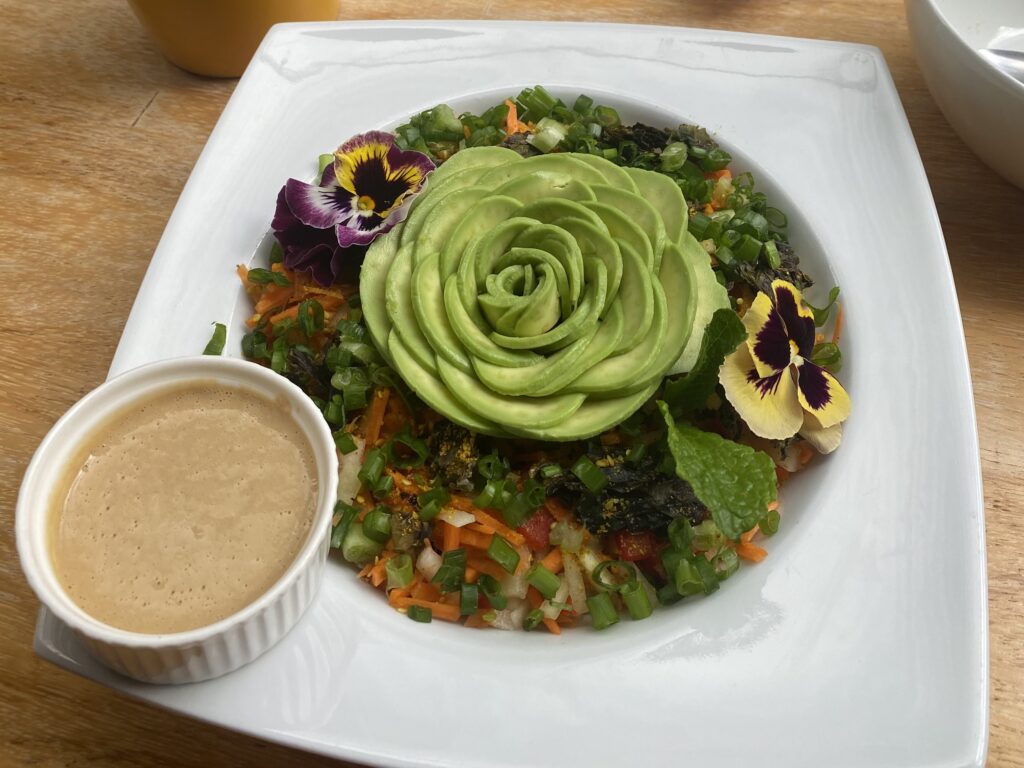
In both traditional and modern uses, a cleansing dieta is required for physical, mental, and spiritual preparation before working with ayahuasca. Generally, this requires removing oil, salt, pork, fermented foods, and pork from one’s diet; abstaining from drugs and sex; and mentally and spiritually preparing oneself for at least a week prior. The intent is to minimize what one takes in to become more sensitive to the effects of the ayahuasca and minimizing any interference.
Modern Use of Ayahuasca
In recent decades, ayahuasca has seen a surge in global popularity as its healing potential has become more widely known. This rise has also sparked controversy as traditional practices have changed and outside influences have shaped how this sacred medicine is used. To understand ayahuasca on a modern context, we must examine both the benefits and controversies.
Modern Ceremonial Practices
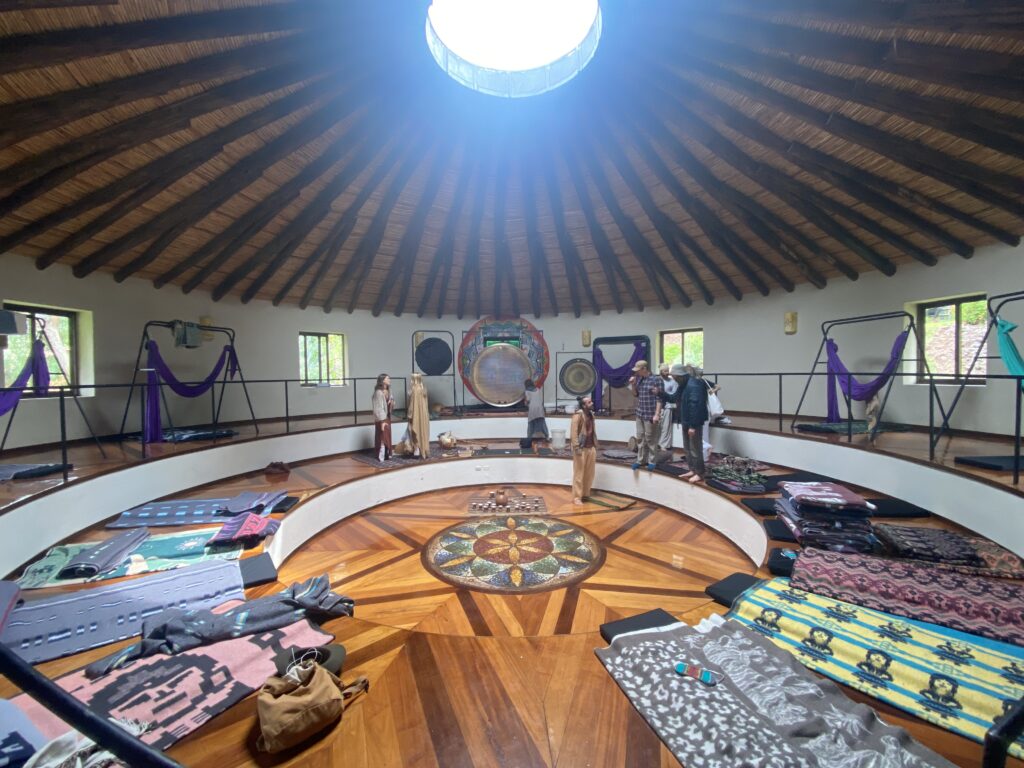
Today, modern practices have split off into a variety of uses that differ from traditional use. Churches have emerged that use ayahuasca as a sacrament, retreat centers have opened, and individuals are now able to use this sacred medicine on their own. Not all modern use of ayahuasca is equal – skilled facilitators, trained shamans, and background checks are all integral components of proper use.
The ayahuasca ceremonies I have been familiar with take place in a sacred space called a maloca—a large building made of natural materials—typically at night. A shaman guides the ceremony through icaros while facilitators support participants. Each person receives their own mat to sit or lie down on and a bucket for purging. In darkness, participants journey through their individual experiences. which typically lasts for 4-8 hours.
Most centers offer three or more ceremonies over a period of weeks. This series of ceremonies ensures participants’ commitment and allows the participant to go through the necessarily unfolding process that usually isn’t possible in a single sitting.
Modern Benefits

The benefits of ayahuasca reported today span the physical, mental, and spiritual. Many turn to ayahuasca as they seek a traditional form of healing in contrast to modern approaches. To achieve the full benefits from ayahuasca, one must be willing to take an active approach and face whatever surfaces to process and move through it. Ayahuasca often reveals to participants what they need to do to heal themselves, which requires dedicated integration work afterward to be effective.
Modern Western medicine often focuses on treating immediate symptoms rather than addressing root causes, while indigenous medicine like ayahuasca typically takes the opposite approach. Though this way may initially feel more challenging, it can lead to lasting healing without continued reliance on external support.
Consider depression as an example. Antidepressants may mask symptoms to help us function better, but they don’t address why we’re depressed. Working with plant medicine, however, involves exploring the underlying causes of depression—which often means confronting difficult truths. The reward of this deeper work is the potential to heal oneself without the need for external treatment into the future.
In ways, this healing process parallels physical surgery where one must be opened up and exposed to address the root of the issue. This may feel painful before it feels better, but it is a necessary part of the healing journey.
While not exhaustive, reported benefits include:
Physical Benefits
- Support and alleviation of chronic conditions
- Improved health and immune system function
- Improved sleep patterns
- Enhanced body awareness and physical sensations
Mental Health Benefits
- Treatment of depression and anxiety disorders
- Processing of PTSD and other trauma
- Addiction recovery and substance abuse treatment
Psychological Benefits
- Increased sense of life purpose and meaning
- Reconnection and direction with one’s life path
- Greater self-acceptance and personal insight
- Improved relationships and social connections
- Enhanced creativity and problem-solving abilities
Spiritual Benefits
- Deeper connection to nature and the universe
- Mystical and transcendent experiences
- Greater sense of interconnectedness
- Enhanced mindfulness and presence
The ceremony itself may last only hours, but the benefits can take weeks or months of dedicated integration to be effective. The process requires courage and commitment, and those who engage fully often find profound healing and learning.
The Dark Side of Ayahuasca Tourism

It would be unfair to speak about ayahuasca without addressing its controversies. The growing interest has brought significant challenges, including unethical practices, profit-driven centers, and the potential for harm in poorly facilitated ceremonies.
The term “ayahuasca tourism” refers to those seeking quick fixes and novel experiences at retreat centers. Like many traditional practices adopted by modern cultures, there’s often an attempt to extract measurable benefits while ignoring the crucial context. Ayahuasca has traditionally been used within communities deeply connected to nature, where people possess the proper tools to work with the medicine respectfully and integrate their experiences.
The commodification of ayahuasca can diminish its role as a sacred medicine as it’s seen as another novelty to check-off on one’s adventures. Prioritizing profits has meant the exploitation of locals and the land that is used as well as a disregard for the safety of participants.
However, it’s important to note that not all participants or centers fall into these categories. Many approach the medicine with genuine respect for its traditional use and a dedication to the healing process. It’s crucial to enter these spaces with discernment, ensuring that your chosen center and facilitators are reputable and aligned with your intentions.
Choosing an Ayahuasca Retreat
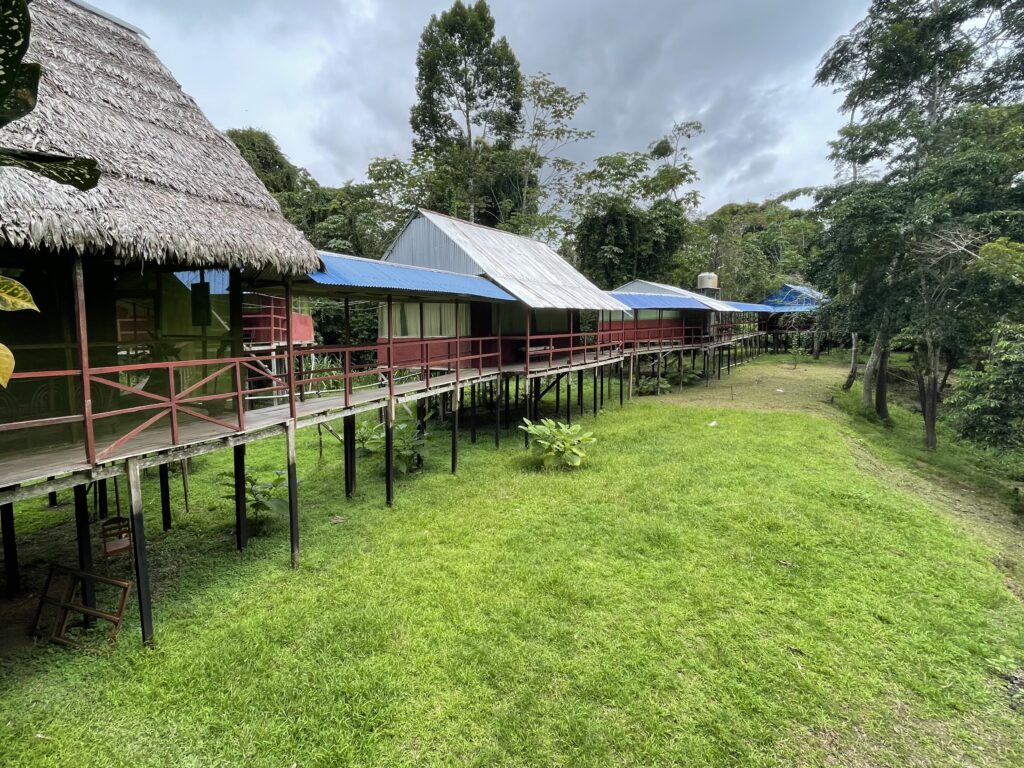
For those feeling called to work with ayahuasca, thorough research is important. Intentions, budget, and the type of experience sought after should be conisdered. It’s advised to look for centers with experienced shamans and facilitators, strong safety protocols, and positive reviews. Integration support—both during and after the retreat—is just as important as the ceremonies themselves.
Some red flags to avoid include lack of transparency, untrained facilitators, and pushy marketing. Trust your gut and choose a centre that prioritizes your well-being. I’ve included a list of resources at the end can support in research.
The Importance of Integration
Perhaps more important than experiences with ayahuasca is the process of integration into one’s life. The medicine often reveals deep patterns and realizations, but without intentional integration, these lessons can fade like dreams.
Ayahuasca use in the modern world often involves stepping away from a fast-paced, stress-filled life to spend time in the isolation of the jungle. The experiences with ayahuasca can be profound, sometimes challenging long-held beliefs. This can make it difficult to return to the same environment and routines.
To support lasting change, it’s important to have a plan for integration. This may include:
- Slowly easing back into daily life rather than rushing back to old habits
- Spending time in nature
- Practicing journaling and meditation
- Seeking out a supportive community
- Working with a therapist or facilitator
- Waiting weeks or months before making any big life changes
The process of using ayahuasca is like planting seeds in a garden with the integration process being the watering, tending, and nurturing of the plant to full growth. Proper care is necessary to for lasting positive change.
Final Thoughts

Ayahuasca is a powerful tool with a rich history rooted in ancient wisdom. Through my experience and research, I’ve come to see it as a catalyst for profound personal transformation. While its future use and integration into modern society remains uncertain, what’s clear is the need to approach it with deep respect, humility, and ethical consideration.
As we continue to face global challenges with mental health and existential uncertainty, tools like ayahuasca provide pathways to insight and healing. It’s also important to remember that this medicine isn’t a quick fix or magic solution. Like any growth process, working with ayahuasca requires dedication, courage, and proper integration.
Whether or not ayahuasca calls to you, the principles of intentional healing, respect for traditional wisdom, and the importance of integration work remain universal lessons we can all carry forward.
Resources
Review resources
Retreats
Retreats exist all over the world, though their offerings, expertise, and trianing very greatly. It is important to do your own research before selecting a location. I’ve only worked with Sowa Charana, and can recommend them.
Books
- “The Fellowship of the River” by Joe Tafur, M.D.
- “The Antipodes of the Mind: Charting the Phenomenology of the Ayahuasca Experience” by Benny Shanon
- “Sacred Vine of Spirits: Ayahuasca” edited by Ralph Metzner
- “How to Change your Mind” – Michael Pollan
Podcasts
Documentaries and Videos
- The Last Shaman (2016)
- The Nature of Ayahuasca (2019)
- Ayahuasca; Vine of the Soul (2010)
- Gabor Mate on Ayahuasca (YouTube)
Research
- The Multidisciplinary Association for Psychedelic Studies (MAPS)
- A leading organization researching psychedelics, including studies on Ayahuasca’s effects on mental health.
- The Beckley Foundation
- Supports scientific research on the benefits and risks of psychedelics, including Ayahuasca.
- PubMed Articles on Ayahuasca
- Search for peer-reviewed research articles on Ayahuasca, its effects, and its therapeutic potential.
